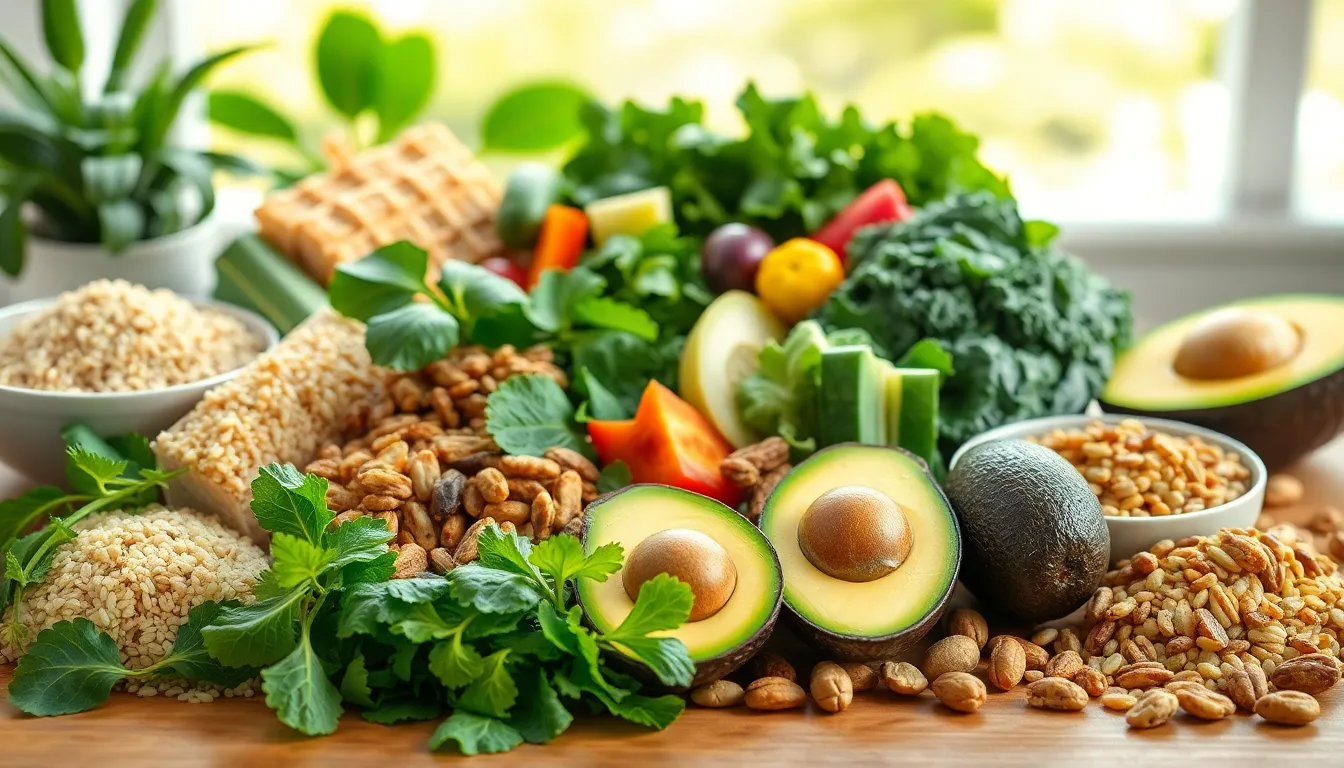Table of Contents
ToggleManaging blood sugar levels is crucial for overall health, especially for those living with diabetes or prediabetes. The right diet can play a significant role in stabilizing blood sugar and preventing spikes. With a variety of foods available, it’s important to know which ones can help maintain balanced glucose levels.
Incorporating specific foods into daily meals can make a difference. From fiber-rich vegetables to healthy fats, these choices not only support blood sugar control but also promote overall well-being. Understanding what to eat can empower individuals to take charge of their health and make informed dietary decisions.
Understanding Blood Sugar Levels
Blood sugar levels refer to the amount of glucose present in the bloodstream. These levels fluctuate throughout the day due to factors like food intake, physical activity, and hormonal changes. Normal blood sugar levels typically range between 70 mg/dL and 130 mg/dL before meals and less than 180 mg/dL after meals.
When blood sugar levels rise, the body releases insulin, a hormone that helps transport glucose into cells for energy or storage. In contrast, low blood sugar, or hypoglycemia, can occur when glucose levels drop below 70 mg/dL, leading to symptoms such as shakiness, dizziness, or confusion.
Maintaining stable blood sugar levels is crucial, especially for individuals with diabetes or prediabetes. Consistently high blood sugar can lead to serious health complications, including heart disease, kidney problems, and nerve damage. Therefore, understanding how different foods affect blood sugar is essential for effective management.
Several factors influence blood sugar levels, including dietary choices, the glycemic index (GI) of foods, and portion sizes. Foods with a low GI, such as whole grains, legumes, and non-starchy vegetables, release glucose more slowly into the bloodstream. In contrast, high-GI foods like sugary snacks and white bread can cause rapid spikes in blood sugar levels.
Table: Glycemic Index of Common Foods
| Food Item | Glycemic Index (GI) |
|---|---|
| White Bread | 75 |
| Brown Rice | 50 |
| Quinoa | 53 |
| Lentils | 29 |
| Carrots | 39 |
| Apples | 38 |
Adopting a balanced diet rich in fiber, healthy fats, and lean proteins helps promote steady blood sugar levels. Regular monitoring and making informed food choices empower individuals to take charge of their health and reduce the risk of complications related to blood sugar imbalances.
Foods That Help Lower Blood Sugar

Specific foods can significantly aid in lowering blood sugar levels. Including high-fiber foods, leafy greens, and healthy fats in the diet plays a vital role in maintaining stable blood sugar.
High-Fiber Foods
High-fiber foods promote better blood sugar control. Fiber slows digestion, preventing rapid increases in blood sugar after meals. Examples of high-fiber foods include:
- Whole grains: Oats, quinoa, and brown rice enhance fiber intake.
- Legumes: Beans, lentils, and chickpeas provide soluble fiber for blood sugar stability.
- Fruits: Berries, apples, and pears are excellent sources of fiber and antioxidants.
Leafy Greens
Leafy greens are low in carbohydrates and packed with nutrients. They contribute to healthy blood sugar management. Key leafy greens include:
- Spinach: Rich in vitamins and minerals while being low in calories.
- Kale: Contains antioxidants and compounds that support insulin sensitivity.
- Swiss chard: Offers vitamins A, C, and K, beneficial for overall health.
Healthy Fats
- Avocados: Full of monounsaturated fats and fiber.
- Nuts: Almonds, walnuts, and pistachios provide essential fatty acids.
- Olive oil: Extra virgin olive oil helps lower inflammation and offers healthy fats.
Foods to Avoid
Avoiding certain foods plays a crucial role in managing blood sugar levels effectively. Individuals should be mindful of meals and snacks that can lead to spikes in glucose.
Sugary Snacks
Sugary snacks include candies, cookies, and other desserts high in refined sugars. These foods offer little nutritional value and can lead to rapid increases in blood sugar levels. Consuming these snacks can cause a quick surge of energy followed by sharp drops, which may result in cravings for more sugar. Opting for healthier alternatives, like nuts or fresh fruit, supports better blood sugar control.
Processed Carbohydrates
Processed carbohydrates consist of white bread, pastries, and many breakfast cereals. These foods often undergo refinement, stripping away essential nutrients and fiber. The high glycemic index of these items contributes to swift increases in blood sugar. Choosing whole grain or fiber-rich alternatives can help stabilize glucose levels and provide sustained energy throughout the day.
Meal Planning Tips
Meal planning plays a crucial role in managing blood sugar levels effectively. By focusing on balanced meals and practicing portion control, individuals can create a diet that supports stable glucose levels.
Balanced Meals
Balanced meals consist of a combination of macronutrients. Each meal should include lean proteins, healthy fats, and high-fiber carbohydrates.
- Lean Proteins: Options include skinless poultry, fish, tofu, and legumes. These proteins help maintain muscle mass and support satiety.
- Healthy Fats: Foods like avocados, nuts, and olive oil improve nutrient absorption and prolong feelings of fullness.
- High-Fiber Carbohydrates: Whole grains, vegetables, and fruits provide essential nutrients and slow digestion, preventing spikes in blood sugar levels.
Combining these components in meals ensures a gradual release of glucose into the bloodstream, contributing to better blood sugar management.
Portion Control
Portion control helps regulate calorie intake and maintain blood sugar stability.
- Fist Rule: A serving of carbohydrates should equal about one cupped hand, while proteins should match the size of one’s palm.
- Plate Method: Fill half the plate with non-starchy vegetables, a quarter with lean protein, and a quarter with whole grains.
- Mindful Eating: Pay attention to hunger cues and avoid distractions during meals. This practice fosters awareness of portion sizes and reduces the risk of overeating.
Implementing portion control strategies provides individuals with tools to manage their dietary habits effectively while sustaining steady blood sugar levels.
Managing blood sugar levels is essential for maintaining overall health and preventing complications. By making informed dietary choices and incorporating high-fiber foods, leafy greens, and healthy fats, individuals can effectively stabilize their blood sugar. Avoiding sugary snacks and processed carbohydrates plays a crucial role in preventing spikes and crashes.
Meal planning and portion control are vital strategies that empower individuals to take charge of their health. By adopting mindful eating practices and focusing on balanced meals, it’s possible to achieve better blood sugar management. With these dietary adjustments, individuals can enhance their well-being and lead healthier lives.








